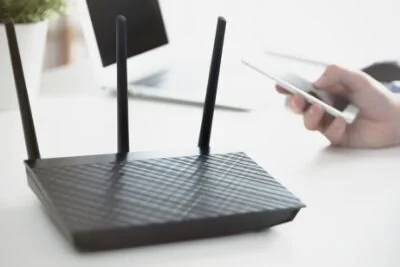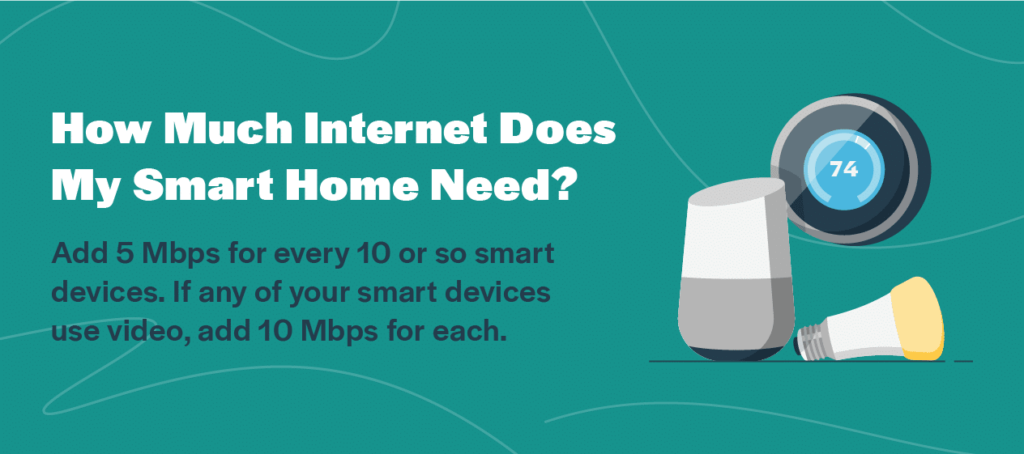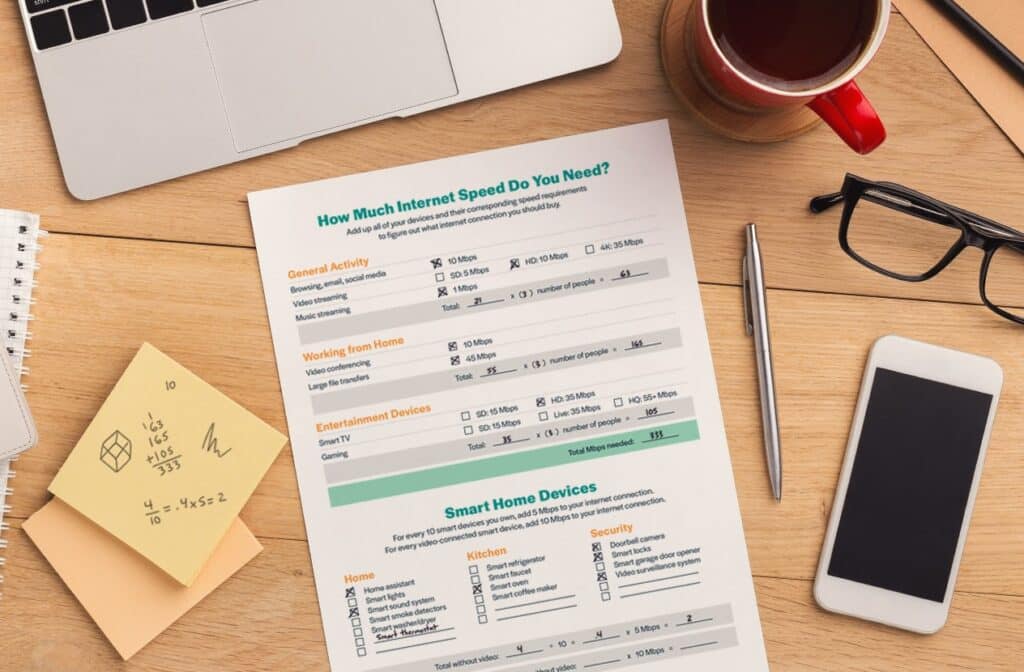
A resource for those seeking information on organizing and transforming spaces.
How To Have a More Reliable Internet
Much of our modern personal and professional lives revolve around internet access, which makes it critical to know how to have more reliable internet.
The importance of internet access and speed cannot be overstated. The internet facilitates business, both for large corporations and individual workers, and provides news and entertainment in our personal lives. A slow connection or a signal that routinely drops interrupts that access, which is why knowing how to have a more reliable internet is a critical piece of knowledge in our modern age.
Know Your Data Cap
Your allotted data every month is represented by your data cap, and it can range anywhere from a few hundred megabytes to a few hundred gigabytes. Using up this data is determined by how much you use the internet; even leaving a page open without clicking on anything uses up your data. Once your data usage reaches a certain threshold, your internet speed will drastically slow down.
Extending Your Cap
If you routinely experience slowdown or are aware that you go over your monthly limit, then you need to contact your Internet Service Provider. Your internet bill may cost more every month, but that is one possible solution to speeding up your internet.
Directly Interface With Your Modem
Your router is your home’s direct line to the internet. Typically, you plug in your modem to the router, which you then either plug in your computers to the router via a physical connection, such as Ethernet or through Wi-Fi. You can eliminate your router altogether and plug your computer directly into your modem.
Wired Connections
While there are troubles that appear when using an Ethernet cable, it is still the most reliable way to access the internet. A direct-wired connection will give you speeds that are much faster and a connection that is much more stable than what is possible with a wireless connection.
Resituate Your Router
As mentioned, your router plugs into your modem; the modem then grants the router internet access, which can offer access to multiple devices, either through a wired connection or wireless. If your only available option is to use a wireless connection, then you need to consider the placement of your router.
Disrupted Connection
A Wi-Fi connection, while less reliable, offers more convenience than a physical cable, but the wireless signal can have trouble getting through the walls of your home. That is why you need to carefully consider where you will place your router to have more reliable internet. Find a spot where it does not have to travel far or through solid walls to get to your device.
Identify the Issue
Multiple factors go into increasing internet speed and reliability. Know where your system’s shortcomings are and what needs to be improved. Without troubleshooting the problem, you may end up paying for extra data you do not need or replacing a perfectly good router.
Audio/Visual Home Updates That You Should Make to Prepare for Smart Home Upgrades
A renovation is the best time to upgrade your home and take advantage of the trending smart home technologies. The smart home industry is growing rapidly, and several manufacturers are beginning to provide devices that easily integrate into a home's architecture. If you are looking to turn your home into a smart home, the potential rewards of complete home automation are almost endless.
A renovation is the best time to upgrade your home and take advantage of the trending smart home technologies. The smart home industry is growing rapidly, and several manufacturers are beginning to provide devices that easily integrate into a home's architecture. If you are looking to turn your home into a smart home, the potential rewards of complete home automation are almost endless.
Home Automation Systems
If you want to install multiple smart home devices during your home remodeling, a smart home system will enable you to automate every device's features. A smart home system provides compatibility with a variety of specific devices across a number of standards and can be incorporated directly with your voice control assistant.
Smart Thermostats
A smart thermostat is an excellent upgrade for your cooling and heating system. Still, these gadgets will more significantly boost your home's energy efficiency if you add a few additional temperature sensors. During your home improvement project, you can configure sensors directly to your smart thermostat, enabling you to adjust the heat in each room automatically.
Built-In Speakers
Audio devices and speakers can consume a lot of your space, and unpleasant cables can really disrupt the stylish atmosphere of your living room. Fortunately, an audio/visual company sells customizable speaker systems that directly integrate into your home's architecture.
Home Security Cameras
Interior cameras, perimeter cameras, and doorbell cameras can be monitored and assessed on your mobile device while you're at work or on holiday. Discreetly disguising video surveillance into the layout of your home's entrance and frequently visited sections can enable you to protect your house and belongings without making family or friends feel uncomfortable. Doorbell security cameras are minimally invasive, have a low-profile, and you can conveniently fix one when you update your doorway.
Motion Detectors and Smart Security Devices
Install sensors that reveal motion, window or door access, carbon monoxide or smoke, broken glass, and flooding. These sensors are specific inputs incorporated into your home automation system and modified to the distinctive architecture of your home.
When you link your home alarm to your automation system, you can get alerts on your mobile phone of every window or door access. This can enable you to flash your lights repeatedly to notify neighbors of a possible break-in. When you’re getting alerts directly to your phone, you can also call emergency services in case of a fire or break-in, even if you’re in another city.
Whether you are remodeling your house yourself or hiring a professional, you shouldn't miss the chance to upgrade your home's technology. A smart home will make your daily activities and tasks more convenient and pleasant while keeping your household and possessions secure.
How Much Internet Does My Smart Home Need?
Some of the trickiest things to keep organized at home are utilities. Gas, electric, and hot water are difficult enough, but in our ever-connected world most people now also consider things like cell phone service, WiFi, and cable to be essential utilities as well.
Some of the trickiest things to keep organized at home are utilities. Gas, electric, and hot water are difficult enough, but in our ever-connected world most people now also consider things like cell phone service, WiFi, and cable to be essential utilities as well.
Since utilities can feel like an unmanageable mess no matter what you do, it’s easy to understand why so many people overpay for WiFi. Sometimes it’s easier to just throw money at a problem than it is to sit down and figure it out! But if you’re harboring a sneaking suspicion that you don’t need as much internet as you pay for, that’s a problem you can solve more simply than you might think.
Check out this easy-to-use checklist of internet-capable devices you may have in your home. All you have to do is plug in the items you own, multiply by the bandwidths provided, and voila! In a matter of minutes you can figure out exactly how much internet you need.
If you’re still unsure, read through the rest of this guide to learn what equipment you need, the difference between download and upload speeds, and whether your calculation should differ if you work remotely or do other internet-intensive activities at home.
Guest Post - How To Protect Your Home This Summer With Smart Home Products
Summer draws to mind a lot of outdoor activities, nights on the town and pool parties. But with a virus sweeping the nation, a lot of that is changing. This year, summer will look a bit different. And while the temperatures keep on climbing, restaurants, bars and recreational areas across the nation are shutting down to help flatten the curve of the coronavirus. So what does that mean for the summer? It means that families will be staying home more than ever before, turning to their backyards and indoor areas for entertainment and exercise. And while this may seem like a great thing, there are issues lurking just around the corner.
Summer draws to mind a lot of outdoor activities, nights on the town and pool parties. But with a virus sweeping the nation, a lot of that is changing. This year, summer will look a bit different. And while the temperatures keep on climbing, restaurants, bars and recreational areas across the nation are shutting down to help flatten the curve of the coronavirus. So what does that mean for the summer? It means that families will be staying home more than ever before, turning to their backyards and indoor areas for entertainment and exercise. And while this may seem like a great thing, there are issues lurking just around the corner.
The high temperatures of summer already take a beating on your home’s appliances and systems, but when you add in the excessive use most homes will have due to this pandemic, you get the phenomenon known as “home strain.” Home strain is the acceleration of wear and tear on your devices, appliances and your homes overall structure. While every home experiences some level of this wear throughout its lifespan, the COVID-19 pandemic has really brought this issue into high gear.
Soon, homeowners across the nation may begin to need maintenance repairs for leaking pipes, broken AC’s or malfunctioning refrigerators. But, there are steps they can take now to help prevent this home strain from taking too large of a toll on their homes (and their wallets). This is where smart home technology comes into play.
Smart Home, Smart Summer
Over the past few years, smart home devices have skyrocketed in capability and popularity, offering real-time and remote assistance to homeowners throughout their homes. With smart devices, you can automatically lock your doors, set automatic shut off timers for your gas stovetop and even monitor the activity inside and outside your home when you are away. And that’s just the tip of the iceberg when it comes to what smart home products can do.
There are a few products specifically catered to help counteract some of the damaging heat of the summer, giving homeowners a head start for potential issues or repairs. For instance, smart thermostats can be set remotely, allowing you to avoid cooling a home that’s empty. They can also help save you money as well (up to 10% a year on heating and cooling)! Other devices such as temperature and humidity sensors will alert you to abnormal situations within your home’s climate, so you can avoid a potentially deadly mold overgrowth or pipe damage you may not have caught otherwise.
Smart home tech also helps keep you safer. Because of the climate, and the fact that many homes sit empty for weeks at a time, summer is home to higher crime rates than any other season. But with a few installations, products like smart doorbells, motion detectors and cameras can allow you to monitor your property from a distance and alert authorities immediately in the case of a break-in. You can even set these devices up to send you a push notification on your phone anytime someone unlocks or locks the front door, offering you total awareness of your home at all times.
Below, the team at Hippo has put together an infographic on smart home devices for a streamlined home. Check out their full list of recommendations and let us know what devices you plan to use for a greater piece of mind and a better functioning home!












